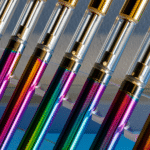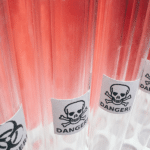A major benefit of legalization is regulation (at least in theory). Cannabis in a legal market can be held to safety standards such as the absence of dangerous pesticides. While autonomous community-enforced regulation can exist without government intervention, this does not happen at the global scale which the cannabis industry has reached today. So how well are governments doing with their pesticides regulations? Bay area journalist Nate Seltenrich recently dug into this issue.
Normally pesticide policy is regulated by the EPA. But the EPA is a federal agency and it has refused to offer guidance for pesticides on cannabis, so each state has reinvented the wheel while guessing at safe levels of pesticides. California and Oregon have compiled different lists of pesticides and their acceptable limits, while further north in Washington, no pesticide testing is required at all. Canada, meanwhile, has a zero-tolerance policy.
Uncertainty has arisen because of the tobacco lobby, which managed to avoid researching any implications of smoking pesticides: “EPA does not assess intermediate or long-term risks [of pesticides] to smokers because of the severity of health effects linked to use of tobacco products themselves”, according to the Government accountability office. So while testing for pesticides drives the cost of legal weed up, it’s hard to know it this even ensures safety.
And that is only considering human health — heavy, systematic use of pesticides has an enormous environmental cost. Seltenrich highlights a few pesticides allowed by California that should arguably be banned entirely: the “possible carcinogen” bifenthrin, and two neurotoxic organophosphates called diazenon and acephate. The latter is also considered a possible carcinogen and possible endocrine disruptor. The Golden State, which is currently considering labeling cannabis a developmental toxin, would do well to ensure that true developmental toxins are not sprayed on cannabis. In fact, the California Depatment of Pesticide regulations published an article on the dangers of pregnant mothers being exposed to organophosphates in cannabis. Unfortunately for consumers, smoked cannabis seems to carry pesticides into the body very well. A publication from chemist Jeffrey Raber, indicated that upwards of 60% of pesticides could be inhaled when smoking a pipe.
But the situation is not solved easily. California is an agricultural region and pesticides can drift from other farms onto cannabis; the extraction process concentrates most pesticides along with cannabinoids leading to failed test results on seemingly good products. Federal legalization would likely standardize U.S. regulations — we hope that states, as laboratories of democracy, will have found a reasonable solution by that time.
NOTE: Project CBD has been engaged with California’s pesticide regulations in the past. The current issue we are most concerned with is the allowance of neonicotinoids on cannabis (there are three, imidacloprid, thiamethoxam, and acetamiprid). All three of these have been banned in France, and two are banned in mainland Europe because of their toxicity to pollinators and their ability to contaminate groundwater. Imidacloprid is one of the most common pesticides used worldwide. It’s been found at high levels in CA water supplies, and the safety data — on which limits have been based — used a species that’s particularly insensitive to imidacloprid toxicity. This is striking to us, since the original draft regulations banned all three.
Read study: Into the Weeds: Regulating Pesticides in Cannabis
Adrian Devitt-Lee is a research scientist and longtime Project CBD contributor. © Copyright, Project CBD. May not be reprinted without permission.







